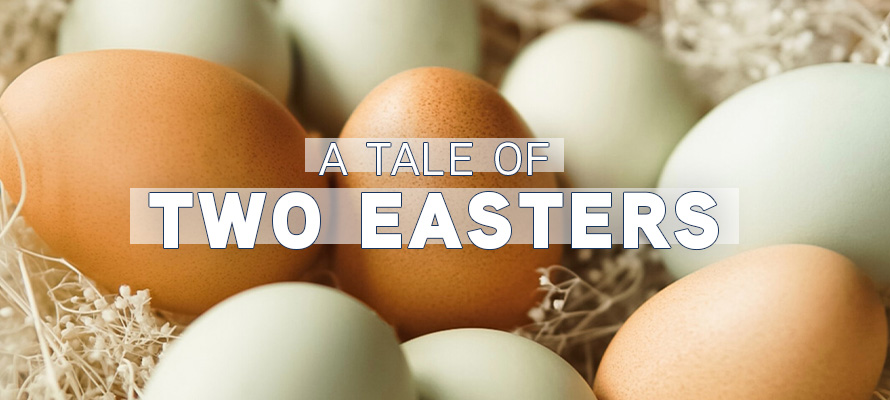
While the majority of churches in communion with Rome celebrated Easter this past Sunday and are well into the Octave of Easter today, Eastern Orthodox Christians and some Byzantine Catholics are just now celebrating Holy Thursday, the beginning of their Triduum. This year, the two Easters are celebrated just a week apart. Occasionally, they are celebrated on the same day, and at other times there is more than a month’s difference.
But why? And why does Easter move every year anyway?
Most Christian holy days are celebrated on the same day of each year. December 25 is always the celebration of our Lord’s birth, for example. Likewise, saint’s feasts are also fixed, as they usually coincide with their death date. However, Easter (and the feasts related to it) moves every year. But Jesus died once, on a particular day, so why not celebrate that specific day every year?
In the early church, some did. Since the first Easter occurred after the celebration of Passover, which is a particular date on the Jewish calendar, some early Christians followed this tradition and always celebrated Easter directly after the Jewish Passover, no matter what day of the week it was. Others celebrated on a Sunday every year, as that became the Lord’s Day. But celebrating on the same day of the week each year naturally results in different dates all the time.
At first, this was not an issue. Christianity was growing, but was also persecuted, so the visible unity of the Church was not of the highest importance. However, once Constantine embraced Christianity and made it the favored religion of the Roman Empire, the varied celebrations served as a detriment to the Church as a whole.
Therefore, at the Council of Nicaea (from which we also get the Nicene Creed) in 325, a common date for the universal celebration of Easter was decided. All those gathered agreed the celebration should be on a Sunday, the Day of the Lord. It no longer had to be tied to the Passover celebration of the Jews. The exact formula became: the first Sunday after the first full moon that falls on or after the vernal (spring) equinox. For these church calendar purposes, they also set the date of the spring equinox as March 21, even though astronomically it can vary between the 20th-22nd.
To predict future Easters, scientists at the time used a 19-year cycle of the phases of the moon to determine the full moon which would fall after the spring equinox. This 19-year cycle, however, was not entirely accurate. Scientists were aware of this imprecision, but the discrepancies would not affect the calendar in their near future, so they did not mind.
Over the years, it did become an issue. The calendar overall grew out of sync with itself, as the lunar year is not exactly parallel with the solar year. Therefore, in the 16th century, the calendar was revised to what we now know as the Gregorian Calendar – named for the Pope who adjusted it, Pope Gregory XIII. This new calendar is more precise in keeping tune with the movements of the earth around the sun, but also resulted in a necessary date change from the previous calendar – the Julian Calendar, named for the emperor Julius Caesar, who created it.
While the Western church adopted the Gregorian calendar, the Eastern Church kept the Julian. With the date change (there was a 10-day difference at the time), all feasts were now celebrated at different times – though, technically on the same date!
In the early 20th century, the Orthodox Churches decided to adopt the Gregorian Calendar for all fixed feasts (such as Christmas and saint feast days) but remain with the Julian Calendar for the celebration of Easter. Since the Gregorian Calendar is currently 13 days different from the Julian Calendar, the Julian equinox corresponds with the Gregorian date of April 3. Therefore, the Orthodox Easter occurs on the Sunday following the first full moon that occurs on or after April 3. There is also an additional adjustment made due to the 19-year lunar cycle that is part of the full moon calculation. This results sometimes in the Easter celebrations occurring on the same day as happened most recently in 2017 and will occur again in 2025. Sometimes, as in this year, it is only a week apart. However, in other years, it can be up to 5 weeks apart – as will occur next in 2024.
Whenever it occurs, and for whatever reason, Easter is cause for great celebration. Whether you already celebrated, or are planning to do so this weekend, we wish you all a very Happy Easter and Blessed Pascha.




